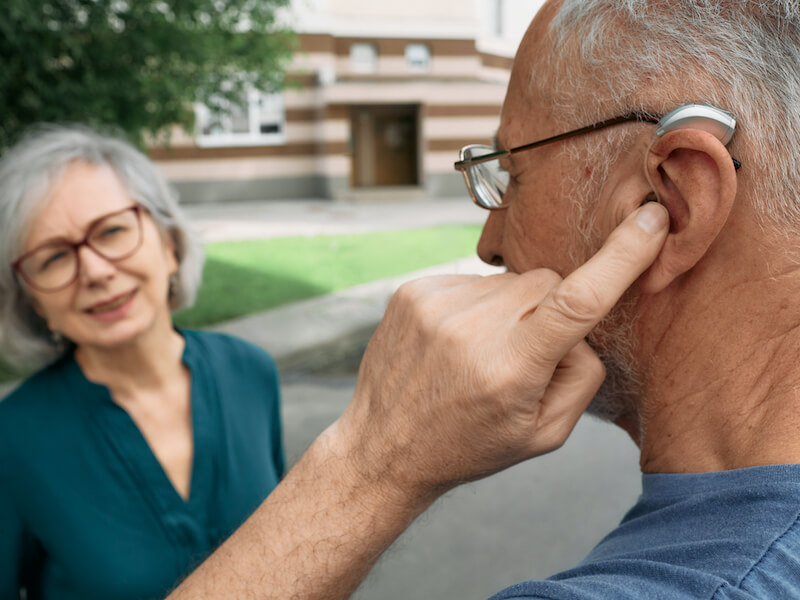
Have you ever been watching your favorite Netflix show when your internet abruptly cuts out? Instead of finding out who won the baking show, you have to watch a never-ending spinning circle. And so you just wait. Maybe it’s your modem, could be your router, possibly it’s the internet provider, or possibly it’ll just fix itself. It’s not a very good feeling.
When technology breaks down, it can be very aggravating. Your hearing aids certainly fall into this category. Most of the time, your hearing aids will provide you with the means to stay connected to loved ones, have conversations with co-workers, and keep up with your neighbors.
But when they quit working, your hearing loss symptoms can suddenly become much more frustrating. The technology you’re depending on has let you down. How do hearing aids just stop working? So how do you deal with that? Well, there are three prevalent ways that hearing aids can malfunction, here’s how you can start to identify and troubleshoot those issues.
Three common issues with hearing aids (and some possible solutions)
Hearing aids are sophisticated devices. Even still, there are some common issues that individuals with hearing aids may experience. Let’s have a look at possible causes of these problems and potential fixes.
Whistling and feedback
Maybe you suddenly begin to hear a terrible high-pitched whistling while you’re attempting to have a conversation with a friend or family member. Or perhaps you notice a little bit of feedback. And so you think, “Why do I hear whistling in my hearing aids? This is strange”.
Here are three possible problems that could be causing this feedback and whistling:
- The tubing that attaches the hearing aid with the earmold, on behind-the-ear models, can sometimes become compromised. Try to examine this tubing as well as possible and make sure nothing is loose and the tube does not appear damaged.
- The functionality of your hearing aid can be impacted by earwax accumulation in your ear canal. This is a relatively common one. That includes making your hearing aid whistle or feedback. If possible, you can attempt to clean some earwax out of your ear or consult with us about the best method to do that (don’t use a cotton swab).
- Your hearing aids might not be sitting in your ears properly. Try to remove them and re-seat them. If the fit isn’t correct you might need to come in so we can help you get a better fit.
Depending on the underlying cause of the feedback, we can help you deal with these problems if you can’t fix them on your own.
Hearing aids not generating sound
Your hearing aids should make, well, sound. That’s their principal function! Something has definitely gone wrong if you can’t hear any sound coming out of your hearing aid. So what could be the explanation when hearing aids work but no sound comes out? Well, there are a few things:
- Your settings: If you have them, flip through your personalized settings. Your hearing aids might think you’re in a very large space when you’re actually in a little room because the setting isn’t right. This balance could throw off the sound you’re hearing.
- Power: Look, we’ve all forgotten to turn the hearing aids on before. Make certain that’s not the problem. Then you can cross that of the list of potential issues.
- Earwax buildup: Yup, earwax strikes again. Inspect your device for signs of earwax on the microphone or speakers or any sensitive bits. You want to make sure the device is good and clean.
- Batteries: Be sure your batteries are completely charged. And whether your batteries are rechargeable or not, it might be worth swapping them out for fresh ones.
If these steps don’t correct your problems, we might have the answers. Whether repair, maintenance, or replacement is your next step, we will be capable of helping you figure that out.
When you have your hearing aids in, you feel pain in your ears
What if your hearing aids work perfectly, but whenever you put them in your ears, your ears begin hurting? And you’re probably wondering why your hearing aids would hurt your ears. This type of discomfort isn’t exactly conducive to using your hearing aids over the long term. So, what could be causing it?
- Fit: The fit of the device is the most evident problem. After all, the majority of hearing aids work best when the fit is nice and snug. So when your hearing aids aren’t fitting very well, there can be some discomfort. Some models of hearing aid can be fit to the distinct shape of your ears. The better the fit, the fewer issues you’ll have with pain over the long run. We will be able to help you get the best possible fit from your devices.
- Time: Usually, it just takes some time to get accustomed to your hearing aids. Each individual will have a different adjustment period. When you first get your new hearing aids, we can help you get a reasonable concept of the adjustment period you can anticipate. Also, speak with us about any discomfort you might be having.
Bypass problems with a little test drive
One of the best ways to prevent possible problems with hearing aids is to take them out for a bit of a test drive before you commit. Most of the time we will have loaner pairs for you to try out before you make a decision.
As a matter of fact, we can help you figure out the best type of hearing aid for your needs, adjust the fit to match your ears, and help you take care of any ongoing problems you may have with your devices. In other words, when your devices stop working, you’ll have a resource that can help!
And that’s a lot more than you will get from an over-the-counter hearing aid!
